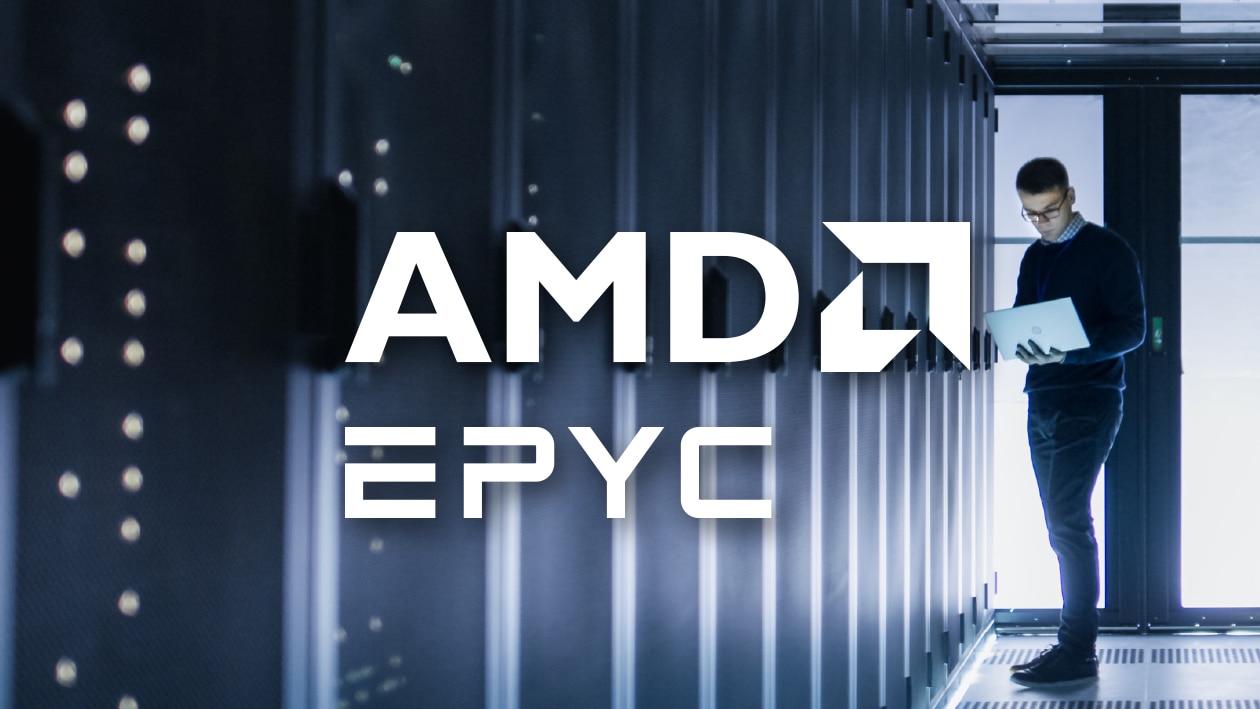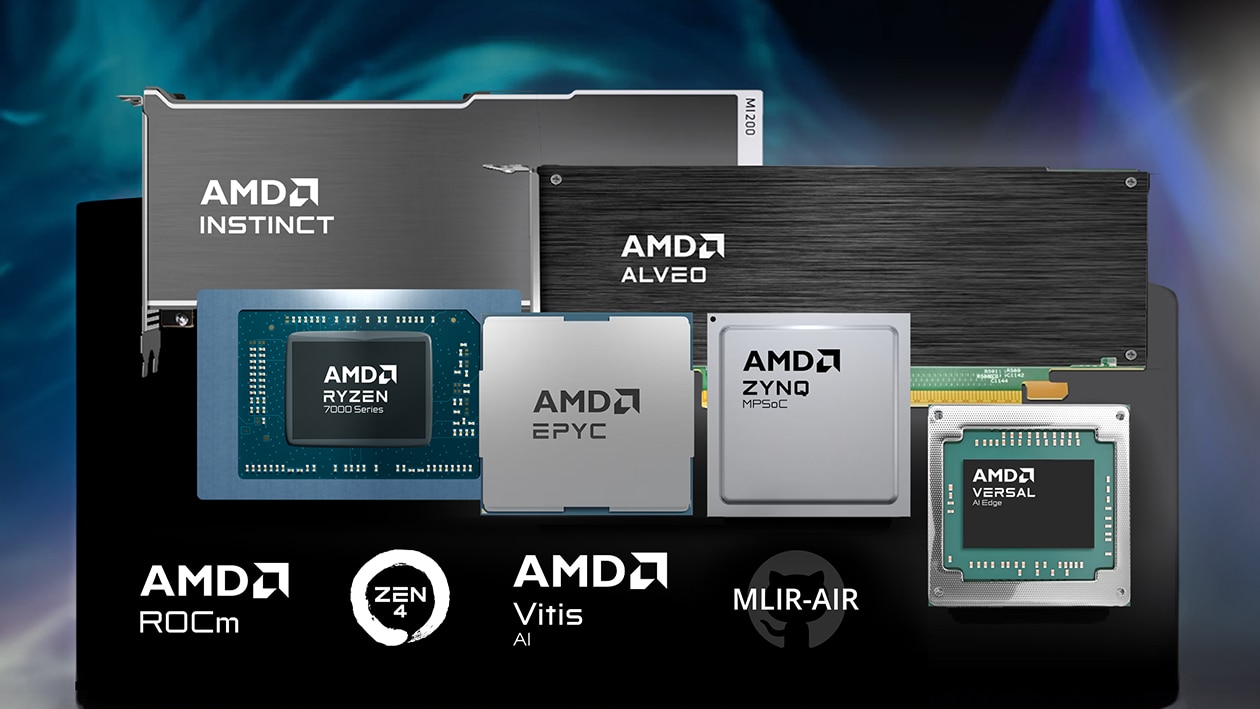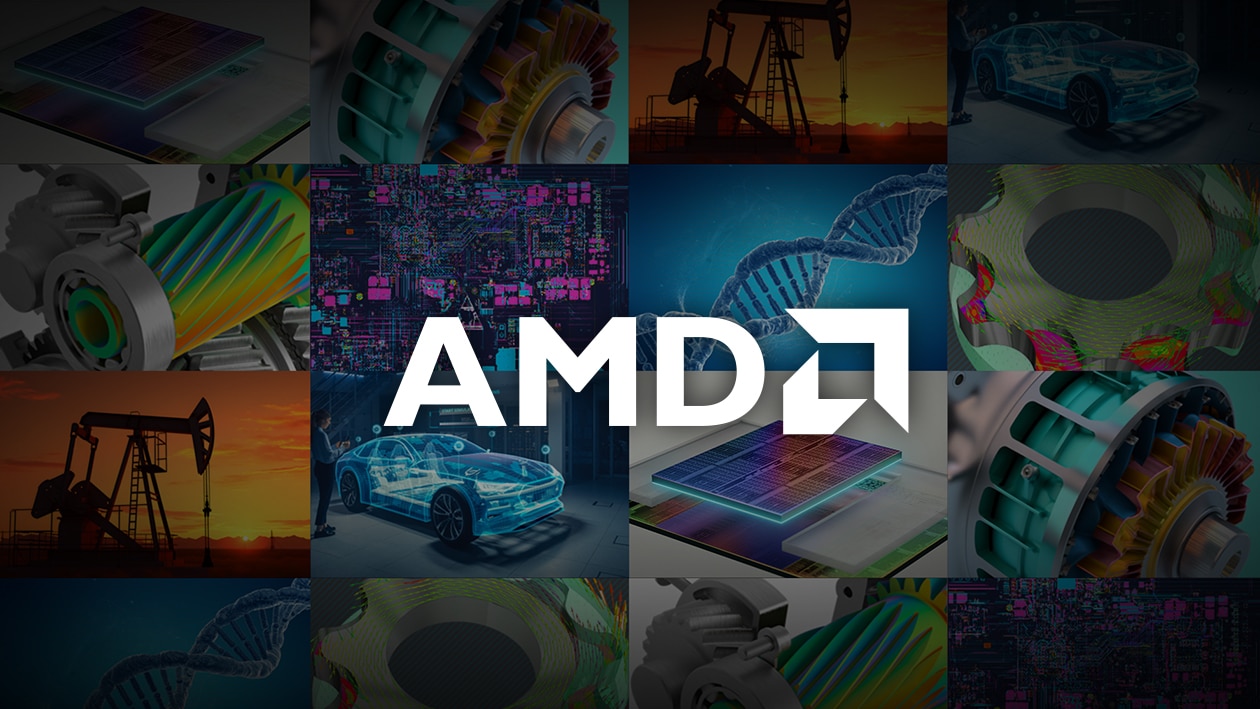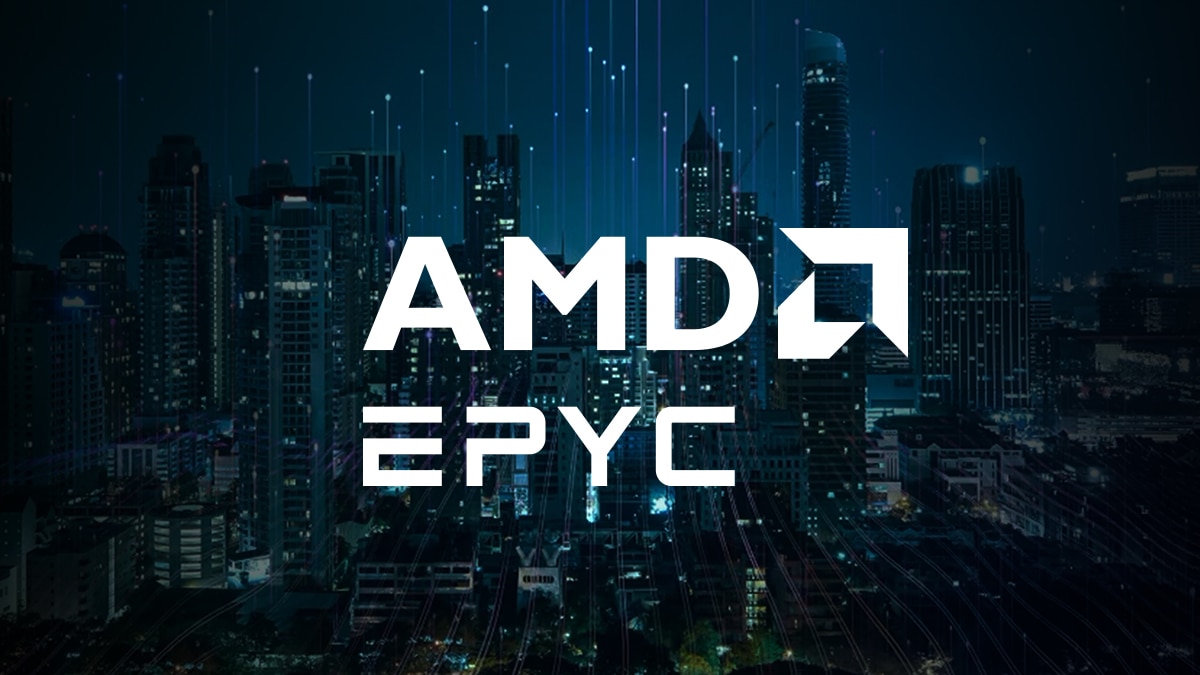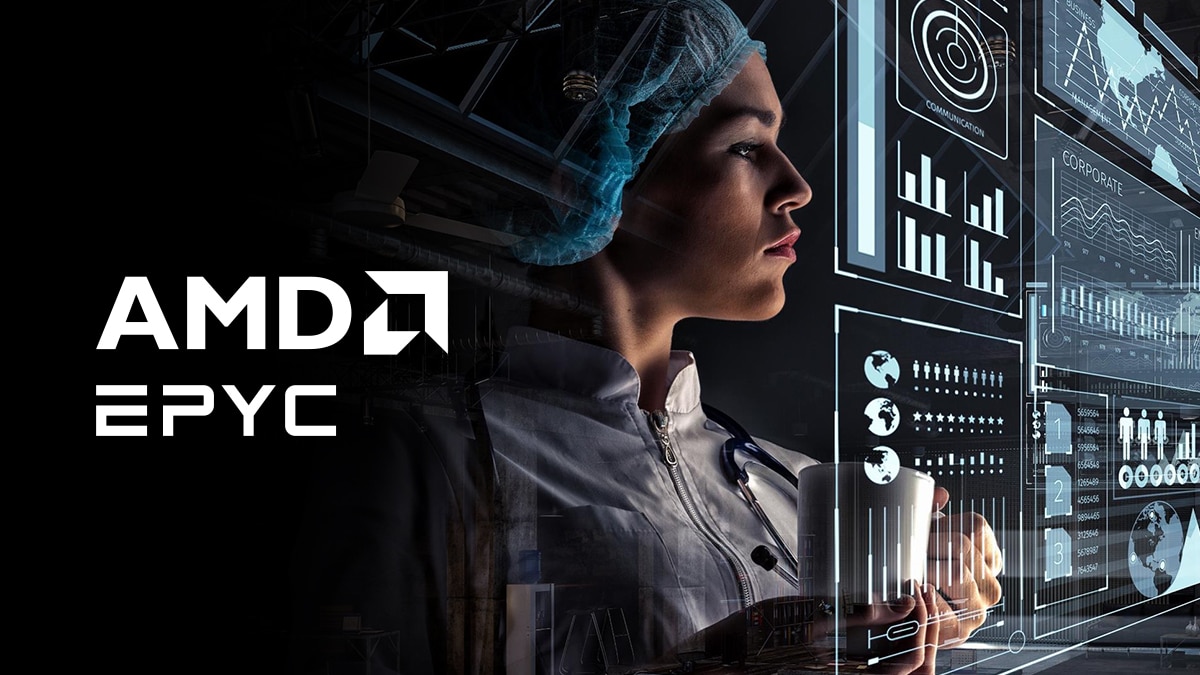Replace Aging Server Infrastructure with Something Revolutionary
The data center is changing once again. The infrastructure that exists now is having to make way for increasing workloads and complex AI tasks that weren’t a factor a few short years ago. Coupled with growing constraints around power, space, and budget, pressure on IT departments is only growing.
Most major enterprises today run hybrid virtualized environments, with on-premises and cloud virtual machines (VMs) powering their IT workloads. As demand grows, costs are rising from both a software perspective and the budgets required for data centers today.
The Problems Virtualization Enterprises Face Today
As costs rise, each server your customer manages is becoming more expensive to operate. Aging hardware, increasing running costs, demands for more throughput; here’s a summary of today’s challenges enterprises face:
Performance for Quicker Time to Results
Customers are being asked to balance existing workloads with new AI processes, adding even more demand on completing tasks in a timely manner. Servers already at capacity have no way to meet the demands coming their way; the ask from end-users is “more processes, done faster”.
Making the Most of Existing Server Space
The obvious solution to issues with performance and increased throughput is to increase server capacity. Many enterprises today simply don’t have the budget to build new infrastructure. The space they have is what’s available.
Maintaining or Improving Server Efficiency
Putting aside raw performance and server density, what about efficiency? With rising costs, and the added demand that AI will likely draw when it comes to power, how do businesses begin to balance increased server demand with the need for more server compute?
Optimizing Costs
As virtualization software licensing shifts to a more subscription-based model, some customers may see their licensing costs skyrocket. The question becomes: how do customers minimize the additional cost of these new licensing fees without adding more hardware, while also ramping up virtualization machine (VM) performance?
Keeping Everything Secure
As data continues to increase, how do businesses maintain the security they enjoy today? What worked yesterday won’t support the burgeoning volume now in use. Enterprises want peace of mind, knowing that the solution they choose delivers security as a priority.
AMD EPYC™ Processors: The Solution for Virtualization Customers
While demands for ‘more’ are rising, customers’ total cost of ownership (TCO) doesn’t have to rise with them. AMD EPYC™ processors offer a range of solutions that stand ready to solve the problems facing the modern data center, optimizing customer infrastructure for the virtualization needs of today and tomorrow. From high-density, energy-efficient cores to massive throughput, AMD EPYC CPUs enable your customers to scale their business, whether they’re running thousands of VMs or compute-heavy AI workloads.
5th Gen AMD EPYC processors help enable customers to prepare their network for what’s next, addressing constraints around performance, efficiency, and server density, with a range of products that scale from 16 cores to 192 cores, and L3 cache sizes up to 1152MB thanks to AMD 3D V-Cache™ technology. AMD can help meet customer’s virtualization needs, whether they’re a bank with stacks of statements to process overnight or a design firm running complex simulations; results matter, and AMD EPYC processors will help deliver.
View the complete AMD EPYC™ processor customer buying guide.
While AMD EPYC processors deliver performance, it’s not at the cost of efficiency. In fact, they power the most energy efficient x86 servers in the game, delivering exceptional performance and helping to lower energy consumption at the same time.1 For customers looking to reduce their licensing costs, the performance offered by each AMD EPYC CPU core means they can run multiple VMs per core as opposed to using slower, dated hardware that requires multiple cores per VM. In fact, customers switching to a new data center powered by AMD from even a 5-7 year old setup can break even in as few as six months.2
When it comes to energy efficiency, compared to competitor products, a total of 11 servers advanced by AMD EPYC™ 9654 processors running 2,000 VMs use an estimated 35% less power annually than the 17 Intel® Xeon™ Platinum 8490H processor-based servers required to deliver the same performance; a hardware acquisition expenditure reduction of up to 47%.3
Help your customers visualize how much they could save by switching to AMD EPYC™ processors today: AMD EPYC Processor Tools.
Customers like DBS have adopted virtualized general-purpose compute through servers advanced by AMD processors in their business and are experiencing revolutionary results:
For DBS, quartering their server footprint was just the start. After making the move to servers advanced by AMD EPYC processors, they moved to 99 percent virtualization with the aim to increase to 99.6 percent, reduced their power consumption by 50 percent, while leaving the door open for a tenfold growth potential and a 40x efficiency gain as their workloads scaled up.
The story gets better; after moving from their traditional infrastructure to a virtualized equivalent, they reduced costs by 75 percent.
Read the full DBS case study here.
They’re not alone; Emirates NBD cut software costs and transformed their banking services using cloud-native, container-based software on servers powered by AMD EPYC CPUs. By modernizing their infrastructure, the company created a flexible technology stack that enables them to scale while reducing costs and improving performance.4
In moving to AMD EPYC processor solutions, DBS, Emirates NBD, and other customers have been able to increase performance, reduce server footprint, and make space to improve costs as well as power efficiency.
The Elephant in the Room: Making the Switch
As more and more customers are starting to understand the need for new infrastructure, the concern becomes how to make the switch; pausing operations to replace servers presents downtime and a business loss that’s simply unacceptable. The answer then is live migrations, but how simply can this be actioned?
In addition, customers question how easy it will be to move from long-used competitor products to new AMD solutions, despite the promise of better results and TCO. What issues might they face when switching, and will it result in business downtime?
Making Migrations Easy with VAMT
AMD has teamed with VMware® to jointly develop VMware Architecture Migration Tool (VAMT), an open-source automation tool that helps automate and reduce the complexity of customer migrations to AMD hardware from existing x86 hardware, with the following features:
- Fully Automated Cold Migration
- VM Success Validation
- Process Throttling
- Change Window Support
- Idempotent
- Email and Syslog Support
- Audit Trail
- Rollback
Thanks to VAMT, customers can rest easy knowing they’re migrating smoothly to a modern solution that offers them new levels of productivity and efficiency.
Learn more about VAMT here, or read our white paper.
Let Customers Know the Good News
If your customer is wondering how to move beyond their aging hardware and get the most out of their server infrastructure, introduce them to the power of AMD EPYC™ processors.
AMD Arena
Enhance your AMD product knowledge with training on AMD Ryzen™ PRO, AMD EPYC™, AMD Instinct™, and more.
Subscribe
Get monthly updates on AMD’s latest products, training resources, and Meet the Experts webinars.

Related Articles
Related Training Courses
Related Webinars
Footnotes
- EPYC-028D: SPECpower_ssj® 2008, SPECrate®2017_int_energy_base, and SPECrate®2017_fp_energy_base based on results published on SPEC’s website as of 11/10/22. VMmark® server power-performance / server and storage power-performance (PPKW) based results published at https://www.vmware.com/products/vmmark/results3x.1.html?sort=score. The first 80 ranked SPECpower_ssj®2008 publications with the highest overall efficiency overall ssj ops/W results were all powered by AMD EPYC processors. For SPECrate®2017 Integer (Energy Base), AMD EPYC CPUs power the first 11 top SPECrate®2017_int_energy_base performance/system W scores. For SPECrate®2017 Floating Point (Energy Base), AMD EPYC CPUs power the first 12 SPECrate®2017_fp_energy_base performance/system W scores. For VMmark® server power-performance (PPKW), have the top four results for 2- and 4-socket matched pair results outperforming all other socket results and for VMmark® server and storage power-performance (PPKW), have the top overall score. See https://www.amd.com/en/legal/claims/epyc-claims.html#q=EPYC-028C for the full list. More information about SPEC® is available at http://www.spec.org. SPEC, SPECrate, and SPECpower are registered trademarks of the Standard Performance Evaluation Corporation. VMmark is a registered trademark of VMware in the US or other countries.
- This scenario contains many assumptions and estimates and, while based on AMD internal research and best approximations, should be considered an example for information purposes only, and not used as a basis for decision making over actual testing. The Server & Greenhouse Gas Emissions TCO (total cost of ownership) Estimator Tool compares the selected AMD EPYC™ and Intel® Xeon® CPU based server solutions required to deliver a Target Performance Metric of 28700 units of integer performance as of April 10, 2025. This estimation reflects a 5 year time frame. Only power costs and software license costs contribute to OPEX. This analysis compares a 2P AMD 32 core EPYC_9375F powered server with a SPECrate2017_int_base score of 1010 (https://spec.org/cpu2017/results/res2024q4/cpu2017-20241105- 45389.pdf) compared to a 2P Intel Xeon 32 core Platinum_8562Y+ based server with a SPECrate2017_int_base score of 729 (https://spec.org/cpu2017/results/res2024q2/cpu2017-20240530-43623.pdf) versus legacy 2P Intel Xeon 24 core Gold_6252 based server with a SPECrate2017_int_base score of 287 (https://spec.org/cpu2017/results/res2019q4/cpu2017-20190916-18249.pdf). For additional details, see https://www.amd.com/en/legal/claims/epyc.html#q=9xx5TCO-011. (9xx5TCO-011)
- SP5TCO-036A: As of 05/19/2023 based on AMD Internal analysis using the AMD EPYC™ Server Virtualization & Greenhouse Gas Emission TCO Estimation Tool - version 12.15 estimating the cost and quantity of 2P AMD 96 core EPYC™ 9654 powered server versus 2P Intel® Xeon® 60 core Platinum 8490H based server solutions required to deliver 2000 total virtual machines (VM), requiring 1 core and 8GB of memory per VM for a 3-year period. This includes VMware software license cost of $6,558.32 per socket + one additional software for every 32 CPU core increment in that socket. This scenario contains many assumptions and estimates and, while based on AMD internal research and best approximations, should be considered an example for information purposes only, and not used as a basis for decision making over actual testing. For additional details, see https://www.amd.com/en/legal/claims/epyc-claims.html#q=SP5TCO-036A.
- GD-181: All performance and cost savings claims are provided by Emirates National Bank of Dubai and have not been independently verified by AMD. Performance and cost benefits are impacted by a variety of variables. Results herein are specific to Emirates National Bank of Dubai and may not be typical.
- EPYC-028D: SPECpower_ssj® 2008, SPECrate®2017_int_energy_base, and SPECrate®2017_fp_energy_base based on results published on SPEC’s website as of 11/10/22. VMmark® server power-performance / server and storage power-performance (PPKW) based results published at https://www.vmware.com/products/vmmark/results3x.1.html?sort=score. The first 80 ranked SPECpower_ssj®2008 publications with the highest overall efficiency overall ssj ops/W results were all powered by AMD EPYC processors. For SPECrate®2017 Integer (Energy Base), AMD EPYC CPUs power the first 11 top SPECrate®2017_int_energy_base performance/system W scores. For SPECrate®2017 Floating Point (Energy Base), AMD EPYC CPUs power the first 12 SPECrate®2017_fp_energy_base performance/system W scores. For VMmark® server power-performance (PPKW), have the top four results for 2- and 4-socket matched pair results outperforming all other socket results and for VMmark® server and storage power-performance (PPKW), have the top overall score. See https://www.amd.com/en/legal/claims/epyc-claims.html#q=EPYC-028C for the full list. More information about SPEC® is available at http://www.spec.org. SPEC, SPECrate, and SPECpower are registered trademarks of the Standard Performance Evaluation Corporation. VMmark is a registered trademark of VMware in the US or other countries.
- This scenario contains many assumptions and estimates and, while based on AMD internal research and best approximations, should be considered an example for information purposes only, and not used as a basis for decision making over actual testing. The Server & Greenhouse Gas Emissions TCO (total cost of ownership) Estimator Tool compares the selected AMD EPYC™ and Intel® Xeon® CPU based server solutions required to deliver a Target Performance Metric of 28700 units of integer performance as of April 10, 2025. This estimation reflects a 5 year time frame. Only power costs and software license costs contribute to OPEX. This analysis compares a 2P AMD 32 core EPYC_9375F powered server with a SPECrate2017_int_base score of 1010 (https://spec.org/cpu2017/results/res2024q4/cpu2017-20241105- 45389.pdf) compared to a 2P Intel Xeon 32 core Platinum_8562Y+ based server with a SPECrate2017_int_base score of 729 (https://spec.org/cpu2017/results/res2024q2/cpu2017-20240530-43623.pdf) versus legacy 2P Intel Xeon 24 core Gold_6252 based server with a SPECrate2017_int_base score of 287 (https://spec.org/cpu2017/results/res2019q4/cpu2017-20190916-18249.pdf). For additional details, see https://www.amd.com/en/legal/claims/epyc.html#q=9xx5TCO-011. (9xx5TCO-011)
- SP5TCO-036A: As of 05/19/2023 based on AMD Internal analysis using the AMD EPYC™ Server Virtualization & Greenhouse Gas Emission TCO Estimation Tool - version 12.15 estimating the cost and quantity of 2P AMD 96 core EPYC™ 9654 powered server versus 2P Intel® Xeon® 60 core Platinum 8490H based server solutions required to deliver 2000 total virtual machines (VM), requiring 1 core and 8GB of memory per VM for a 3-year period. This includes VMware software license cost of $6,558.32 per socket + one additional software for every 32 CPU core increment in that socket. This scenario contains many assumptions and estimates and, while based on AMD internal research and best approximations, should be considered an example for information purposes only, and not used as a basis for decision making over actual testing. For additional details, see https://www.amd.com/en/legal/claims/epyc-claims.html#q=SP5TCO-036A.
- GD-181: All performance and cost savings claims are provided by Emirates National Bank of Dubai and have not been independently verified by AMD. Performance and cost benefits are impacted by a variety of variables. Results herein are specific to Emirates National Bank of Dubai and may not be typical.


